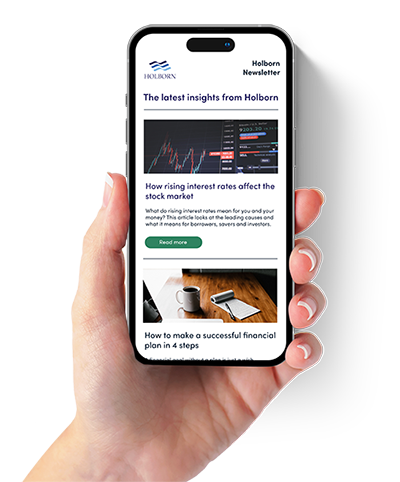
“Open Banking” – fresh choices for consumers?
Posted on: 17th December 2017 in
Finance
“Open Banking” is the way banking is going over the next few decades. Open Banking is designed to change the way we choose, use and consume financial services like booking a flight/ordering a delivery – and integrate these activities with our personal banking on a single platform. But is Open Banking designed to help the banks or their customers? This month, professional services firm Deloitte released a research paper showing how Open Banking works, bringing together Deloitte’s own research and customer study. The verdict is that Open Banking heralds the sharing of personal data to give more choice and accessibility to consumers in a digital age – as well as solving a few of the banks’ own headaches.
The Background to Open Banking
Since the 2008 financial crisis, high street banks internationally have faced declining profits, as low-interest rates internationally have squeezed their own lending margins and return on investments. European banks make profit below their cost of capital – and this is expected to continue for at least another two years. Regulation has become more dominant and cost-heavy, further eroding gross profits. Following years of stress-tests – essentially a bank’s ability to withstand a hypothetical scenario, such as a run on the banks or a sudden spike in interest rates – UK retail banks have now been encouraged to stress-test customers, particularly those applying for a loan such as a mortgage. The Competition & Markets Authority, in particular, is gunning for both more choice and more competition among financial services providers to customers. Open Banking is put forward model to achieve this. With Open Banking, financial services providers must share customer data with third-party providers, allowing customers greater transparency in comparing products and providers, but allowing financial technology providers to muscle in on providing the interface with which a customer interacts with such providers. The Open Banking model will essentially make it easier – and, it’s expected, more likely – for the customer to use a few banks for different requirements, using a single platform potentially not owned by any of them, but which can ‘plug in’ the data shared from different sources. The vision is an ecosystem of providers at the user’s fingertips, transforming and streamlining areas as diverse as:
- Deposits and lending
- Insurance
- Payments and currencies
- Capital raising
- Investment management
There’s evidence of an appetite for such a change. Deloitte commissioned pollsters YouGov to survey bank customers. Among the findings, 58% of those with a banking app on their smartphone said they could be persuaded to go fully ‘mobile-only’. Almost half – 49% – said they would trust a non-banking interface such as a payment provider to handle their day-to-day financial requirements (6% more than would trust a traditional bank).
But why do the banks want to club together?
You would think that the banks have no need to consider innovation as a single banking platform, with each of them sitting on plenty of cash and plenty of clients. But the banks have got their own problems, and Open Banking could help them make the best of a new financial landscape as well as the consumer: Traditional banks have this century been competing with internet-only rivals that don’t have the running costs of maintaining high-street branches. Similarly, banks quick to adopt online banking in the ‘90s steamed ahead of their rivals, after a similar story with telephone banking a decade before. Secondly, the new focus on interface and customer experience – ie, what is used, and how – means that users will get more tech-savvy to exploit this new world of instant comparison, seamless payment transactions and paperless applications. So anyone bank won’t necessarily be able to count on having that customer’s deposit or investment portfolio just because it’s too much hassle to switch! Thirdly, the identity of ‘provider’ has changed. Think of the traditional bank from 30 years ago as a pie – each slice a different, profitable customer base. In the last three decades, external companies have been nibbling into such slices. Independent financial advice gave guidance on savings and investments independent of any one provider compared to the ‘tied’ advice of banks that offered just their own products, and ‘the man from the Pru’. External non-bank credit cards providers, mortgage lenders, merger advisers, hedge funds and currency platforms have all had their bites from the pie, stealing customer dollars from banks in offering more competitive service. So there’s no monopoly on good ideas!
So has the banks’ goose been cooked?
A decade on from the financial crisis, banks still hit the headlines for mis-service, ranging from overcharges to ultra-loose lending policies unfit for the borrower. The Bank of England governor Mark Carney this year laid down a gauntlet to banks and other lenders to tighten its lending processes to prevent a boomerang of defaulting borrowers – hence the recent ‘stress tests’ of customers. These more stringent lending measures, incidentally, leave the door open for crowd-funding and other cash, equity and debt-related borrowing. The survival of individual banks in the new world of Open Banking depends on how each reacts – so it’s likely there will be winners and losers. Deloitte’s report envisions four options for traditional banks:
- Full-service provider
- Utility
- Supplier
- Interface
The four vary in whether they will continue to supply their own products; or be a facilitator to, and composite of, other providers; a multi-channel distributor; or a combination therein. Deloitte also highlight the Second Payment Services Directive (SPSD), an update on the initial PSD legislation relevant to all EU-based institutions. The thrust of the new draft is to enhance the efficiency of cross-border payments while making them more secure. As with the other areas in finance, the Directive invites in new solution providers and strengthens the mobile-based and Open Banking revolution.
Open Banking and financial advice
Holborn Assets welcomes any initiatives – whether national and international – that increase choice for consumers and improves access to information. We are set up here at Holborn Assets to support the healthy scepticism of the saver or borrower who asks, ‘is this really the best rate, terms or deal that’s out there?’ Independent advice is all about providing a guide across the whole market, and what’s more, providing solutions that fit your goals and life requirements. We’re happy to be the human face on this world of market comparison, clever gadgetry and – now – Open Banking.

















